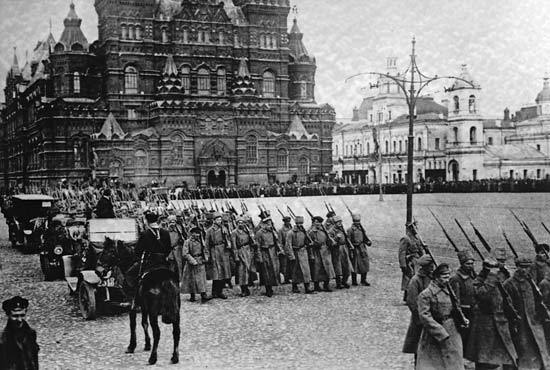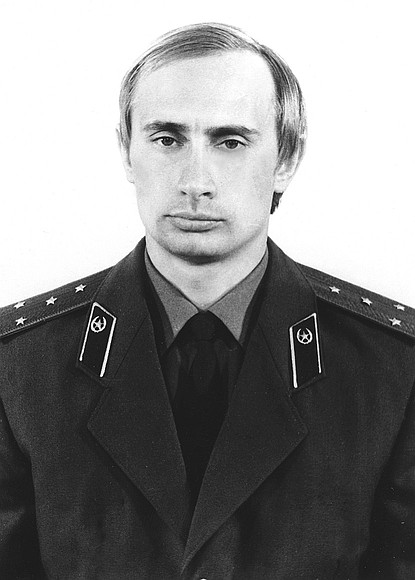Postface
After reading the previous words, the reader will necessarily wonder where the revolutionary process stands today. Is the Third Revolution still alive? Or does the collapse of the Soviet empire permit us to affirm that the Fourth Revolution is erupting in the deepest levels of the political reality of Eastern Europe, or even that it has won?
We must make a distinction. Today, the currents of thought that advocate the implantation of the Fourth Revolution have spread — though in different forms — throughout the world and reveal nearly everywhere a marked tendency to increase in volume.
In this sense, the Fourth Revolution is in a crescendo that is promising to those who desire it and threatening to those who oppose it. However, it would be exaggerated to say that the present order of things in the former U.S.S.R. is already totally modeled according to the Fourth Revolution and that nothing of the Third Revolution remains there.
The Fourth Revolution, although having also a political dimension, identifies itself as a cultural revolution. In other words, it broadly encompasses all aspects of human existence. Therefore, the political clashes that may occur among the nations that once formed the U.S.S.R. could strongly condition the Fourth Revolution, yet they will hardly dominate the events, the ensemble of human acts encompassed by the cultural revolution.

Przystanek Jezus, a Woodstock festival lasting eight days in Poland, organized by the Catholic Association in Service of the New Evangelization “Community of St. Timothy from Gubin”. Many religious, including Bishops and a Cardinal, attend this event. This is one of the the booths, supporting homosexuality. “Association for the benefit of LGBT people.” Another sign says “Campaign against homophobia”. Photo by Ralf Lotys.
But what about the public opinion of the former Soviet countries (many of them still ruled by old communists)? Has it nothing to tell us about this, since, according to Revolution and Counter-Revolution, it had such a great role in the previous revolutions?
This question cannot be answered unless other questions are answered first. Is there truly a public opinion in these countries? Can it be induced to participate in a systematic revolutionary process? If not, what are the plans of the top national and international leaders of communism for orienting this public opinion?

Russian Revolution of 1917
These questions are difficult to answer, as presently public opinion in the former Soviet world is evidently indifferent, amorphous, and immobilized by the weight of seventy years of total dictatorship. Under this tyranny, every individual feared to manifest his religious or political opinion in many circles, even to his closest relative or most intimate friend. A probable denunciation — veiled or open, true or false — could consign him to indefinite hard labor on the frozen expanses of Siberia. Nevertheless, these questions must be answered if we are to render a prognosis of the course of events in the erstwhile Soviet world.
Moreover, the international media continues to publicize the eventual migration of famished semi-civilized — ergo semi-barbarian — hordes to the prosperous European countries living under the regime of Western consumerism.
Starved not only of food but of ideas, what do these pitiable people understand of the free world, at once supercivilized and gangrenous? On meeting it, would they not clash with it? And what would result from this clash, both in an invaded Europe and, by extension, in the old Soviet world? A self-managing, cooperationist, structuralist-tribalist revolution1 or an immediate world of total anarchy, of chaos and horror, which we would not hesitate to call the Fifth Revolution?

Recently published, Mr. Julio Loredo de Izcue shows that with Pope Francis, liberation theology is back with a vengeance after three decades of laying low. Click the bookcover for more information or to order yours today!
At the moment this edition goes to press, any answer to these questions would be manifestly premature. Not that they should not be asked now, for the future is so unpredictable that it might be too late to ask them tomorrow. Indeed, of what use are books, thinkers, or remnants of civilization in a tribal world beset by the hurricanes of the disordered human passions and the deliria of structuralist-tribalist “mysticism” — what a tragic situation, in which nobody would be anything in the empire of Nothingness.
1. See Part III, Chapter 2, Commentary “Perestroika and Glasnost: Dismantling the Third Revolution or Metamorphosing Communism?”

Plinio Corrêa de Oliveira, Revolution and Counter-Revolution (York, Penn.: The American Society for the Defense of Tradition, Family, and Property, 1993), Conclusion. Pg 169-171.









